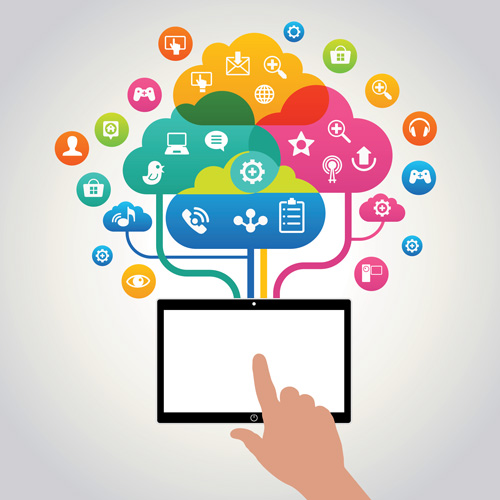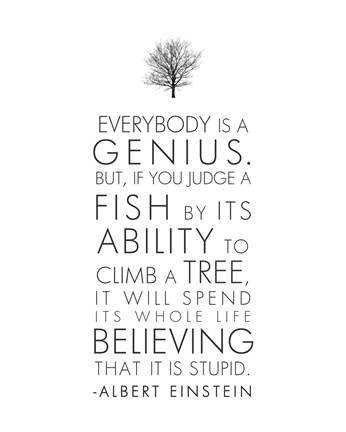by: Emily Kavanagh, MS, LLP
Individuals with dyslexia are often creative, out-of-the-box thinkers with the ability to problem-solve in ways that others may not think of. Some of the world’s greatest inventors, teachers, entertainers, entrepreneurs, and leaders have been identified as dyslexic. However, when faced with learning and life tasks relying heavily on reading, writing, and other language-based information processing, their ability to perform efficiently, consistently, and confidently can be greatly impacted. We lose the ability to access their amazing skills and contributions if we get stuck in forcing learning in a way that does not fit with their neurological make-up!

Luckily, there are many ways to bypass the systems causing these difficulties. By removing some of the barriers to learning and anxiety-reactions to language-based learning for individuals with dyslexia through AT, the joy of learning and ability access to their true capabilities and talents is enhanced. When we can bypass and/or support areas of weakness or relative inefficiencies, we allow the individual to apply their strengths, feel confident and truly engage in learning and living to their full potential. Rapid development and integration of AT into devices that most people use every day, has increased the accessibility of such tools to a broader audience, allowing their use at home, school, work and across a variety of other settings. Check out your devices “accessibility” settings and you may be surprised to find a few tools that have been waiting for you!
When it comes to AT for dyslexia, some of my top picks include:
- E-reader Tools: These tools allow digital text to be read aloud to an individual via computerized/synthesized or pre-recorded human voices while the reader can follow along visually, enhancing reading accuracy, comprehension and fluency. Most e-reader tools allow for digital note-taking, annotation, highlighting, visual adjustments (e.g., text size/color, background color), and multiple voice style/speed options. Most devices have built-in “text-to-speech” or “speak selection” functions which can be activated through your accessibility settings and allow text to be read aloud. There are also various apps, e-book resource libraries, software programs, and web-based browser extensions for e-reader tools. In fact, your public library likely has an e-book section!
- Dictation and Speech-to-text technology: These tools allow the user to speak into their device and have their words typed for them, speeding up the writing process, reducing “writer’s block” and decreasing spelling demands. Short-cut commands for spacing, punctuation and other formatting tools can also be done via voice. If you’ve ever done a Google search or sent a text with your phone using the microphone button, you have already mastered using speech-to-text!
- Spelling and Grammar Supports: Modified keyboards, browser toolbars, and apps provide spelling and grammar supports via integrating text-to-speech functions, dictation capabilities, audio-playback of words/sentences while they are being written, visual/audio dictionaries, word prediction and feedback about grammar, sentence structure and punctuation. While many of these tools have been built into many common word processing programs, some people find having all the tools in one place more convenient. In addition, specialized spelling and grammar support tools have been designed for the dyslexic mind, providing more advanced recognition of spelling errors, advanced word prediction and support in application of writing skills.
- Multi-sensory digital flashcards: Digital flashcards which integrate audio, images, and text (along with built-in text-to-speech technology which reads flashcards aloud to the reader) provide a multi-sensory approach to learning. Most digital flashcard tools also provide a variety of learning/practice methods including traditional flashcard format and converting flashcards into fill-in-the-blank and multiple-choice questions. Tracking of accuracy is also built-in to help the user identify areas needing more studying.
- Note-taking devices with audio-recording support: Note-taking technologies with built-in recording devices which can be used to record lectures within the notetaking device. Typed or written notes are then synced with audio so that when typed/written notes are tapped/clicked on, audio playback will jump to what was being said at the time that the word was being written. Digital versions allow addition of captured images into notes as well.
Unsure of where to start? If you are seeking AT for your child or if you are a college student, starting with your school’s special education support team or campus’ student disability resources center can be great ways to get some training and identify what tools are readily available through your institution. We at McCaskill Family Services’ Assistive Technology Center can also help you navigate the process through consultation and coaching sessions wherein you will be introduced to appropriate AT based on your needs, as well as given an opportunity to practice the tools in session(s). Starting with 1-2 tools at a time and setting clear goals about when, where and how you will use them can really help with integrating them into your daily life. Before you know it, you will be an AT pro!



